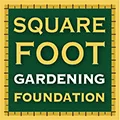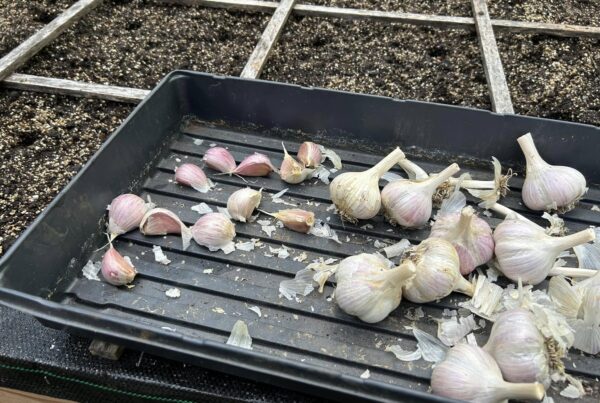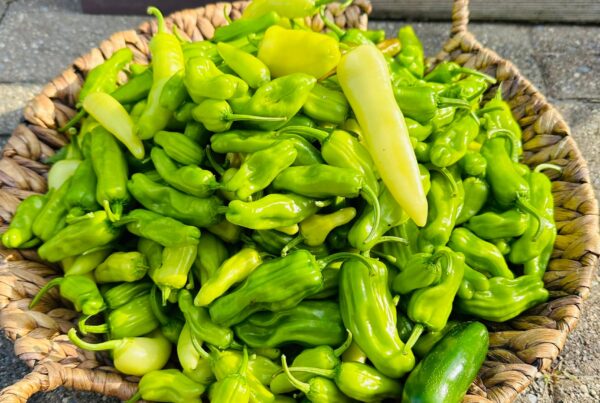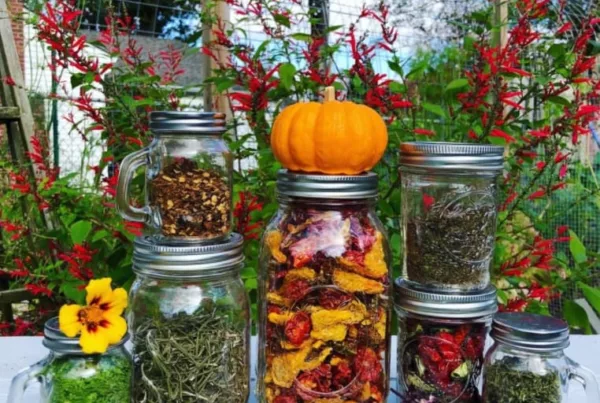Written by Kristina Hicks-Hamblin
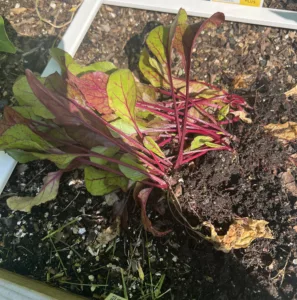
Beet leaves are similar to Swiss chard.
Square Foot Gardening was designed as an efficient, low waste way for people to feed themselves. So, if you are a seasoned adept of this Method (or an adventurous foodie!), you might be wondering how you can squeeze even more nourishment out of your garden’s raised beds.
Hello, low-waste gardening! Or, as we like to say: Yes, you can eat the broccoli leaves. And they’re quite delicious.
What else are you growing that you may not have considered plating up for dinner? Read on to learn about some greens, pods, and flowers that are often thrown in the compost bin, but which make perfectly delicious additions to meals!
1. Beet Leaves Are Edible
Beet leaves are very much like Swiss chard in terms of taste and texture – and no wonder, these two veggies are closely related. Remove the leaves after you pick your beets, wash well, and chop. Steam or sauté them, then top with olive oil and lemon juice.
2. Broccoli and Cauliflower Greens Belong in Soups, Stir Fries, and Omelets
If you enjoy other cruciferous greens like kale and collards, you’ll likely appreciate the delicious greens produced by broccoli and cauliflower plants as well. Once cleaned, remove any fibrous stems (you can cut those up like celery and saute, too, but they do take longer), and cook along side the florets. Or surprise your family – throw these chopped greens into your soup pot, and ask them to guess what they’re eating!
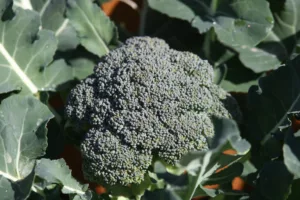
Broccoli with edible greens.
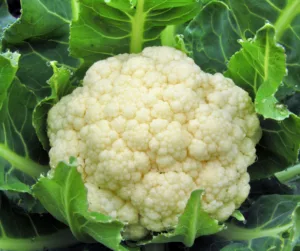
Cauliflower greens are tasty.
3. Carrot Tops, a.k.a., Carrot Greens, Are Herb-a-licious

Carrot greens make a great pesto.
Carrot greens can be used in different ways, such as adding small amounts to soups. But they really shine when treated like a replacement for basil and transformed into a pesto. Remove the greens from your carrot harvest, soak them in water, and rinse. Repeat if needed until the water runs clear. Roughly chop the carrot greens, stems and all, and add them to a blender with olive oil, your choice of nuts or seeds, lemon juice, salt, and garlic. Mix with pasta and serve with sautéed or roasted carrot roots on top.
4. Have You Eaten Your Garlic Scapes?
If you are growing garlic in your Square Foot Garden beds, you may be able to get an extra harvest from your crop. Hardneck garlic types form scapes, which are considered a delicacy in some cultures. These unopened flower buds are harvested a month or so before bulbs are harvested, when they start to curl. Chop the long stems and use in any recipe that calls for garlic.
And while you’re extending the use of your allium crops, don’t throw out the greens from your homegrown leeks either. While most recipes call for the tender, white part of the leek, the green part is delicious as well, adding depth to soups and stews.
And while many gardeners wait until the greens have turned brown before harvesting onions, if you harvest yours while the greens are still fresh, they can be used as stand-ins for chives or scallions.
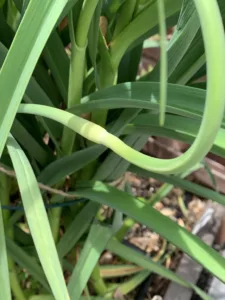
Garlic scapes are a treat.
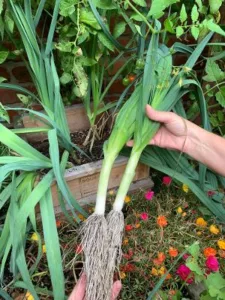
Leek greens can be used in soups and stews.
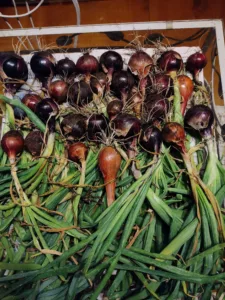
Onion greens are flavorful additions to savory recipes.
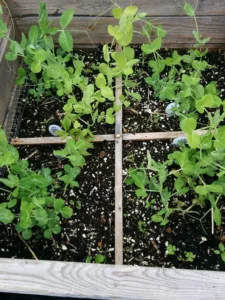
Pea shoots impart a pea-like flavor to stir fries.
5. Early Flavor: Eating Pea Shoots
Peas are one of the earliest crops in the spring garden – and can be one of the latest ones in autumn, if you plan right! But delicious pods aren’t the only thing you can harvest from these plants – their shoots and flowers are edible too. If you get impatient waiting for pea pods, go ahead and snip a few shoots from the plants. These taste great raw in salads, or cooked up with other spring veggies like asparagus.
6. Radish and Turnips: Always Eat Your Greens
Radishes and turnips may be two of the hardest working crops in your garden. Radish greens are a fast growing staple of low waste gardening. After you pick your radish roots, trim the greens. Soak to wash, rinse, and then trim away any fibrous stems. These greens can be sauteed with other veggies, or large bunches of them can be pureed into delicious soups.
Like radish greens, turnip greens are a gem in the rough. These cruciferous veggie tops are just as delicious as any green grown specifically for the purpose. Remove any large, fibrous stems, wash well, chop, and mix into soups, or cook them up on their own to serve with rice and beans. These make a good stand in for cooked spinach or collards.
7. Fear Not a Bolting Radish: Eat the Flower Stalks Too.
Speaking of radishes, when weather suddenly gets hot, radishes sometimes bolt, sending up a tall flower stalk. This can happen quite quickly in the Square Foot Garden and before you know it, you might have seed pods growing from your radish plants. Picked before the seeds mature, green radish pods are a spicy treat with a wasabi-like flavor. Enjoy them fresh as a snack, or chop and add to stir fries.
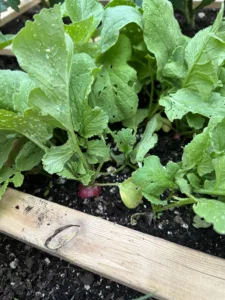
Radish tops can be enjoyed as a sautéed green.
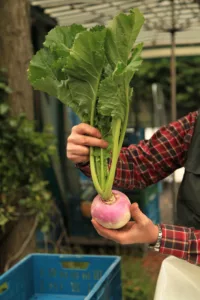
Turnip with fresh greens. Photo by Frank Vincentz, via Wikimedia CC BY-SA 3.0.
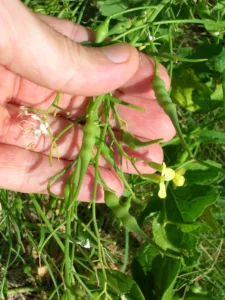
Radish pods. Photo by Forest and Kim Starr via Wikimedia CC BY 3.0.
8. Did You Know You Can Eat Squash Leaves?
You may be full at the thought of eating squash leaves. Notoriously leafy vegetables, squash and pumpkins produce such prolific foliage, you might find yourself thinking that it’s a shame all that greenery isn’t edible. Actually, it is! Again, this is not a new low waste gardening discovery – other cultures throughout the world are already enjoying squash and pumpkin leaves as a nutritious green. Pick young leaves since those are the most tender, and plan on preparing them right away – they don’t keep well. Wash thoroughly to remove soil from the leaves, then chop. Use them as you would any other green – they taste especially great cooked with onion and tomatoes.
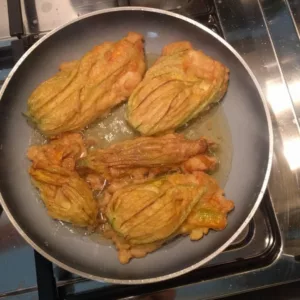
Fried squash flowers. Photo by Giaccai, via Wikimedia CC BY-SA 3.0.
9. Get the Goat Cheese and Stuff a Squash Blossoms
Hardly treated as waste in some cultures, on the contrary, squash blossoms are considered a real treat. Be sure to select male blossoms since the female flowers will produce the fruits you’ll be expecting to harvest later. Male blossoms grow on long thin stems while female flowers have shorter stems and are held closer to the plant. Harvest the flowers right before you are ready to cook them up since they don’t keep well. After picking the flowers, gently wash them in clean water and remove the stamens held within. Squash blossoms are often served stuffed and fried, but they can also be chopped and added to soups or dishes such as risotto.
